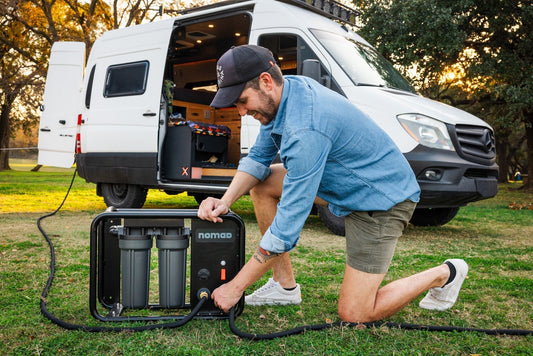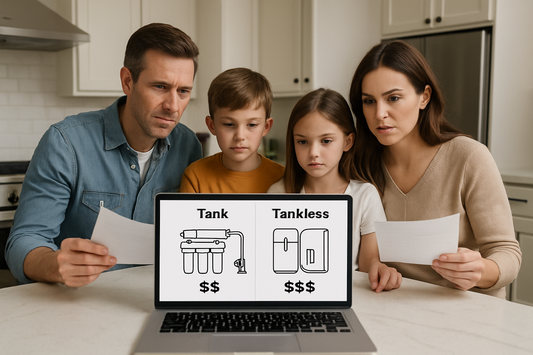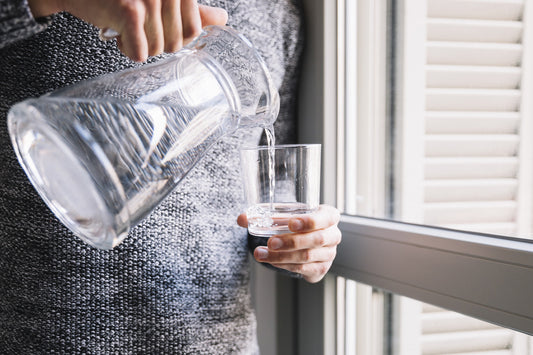Quick Answer: Most homeowners replace water filters too early or too late. The secret to 50% longer filter life lies in recognizing five specific warning signs, implementing proper pre-filtration, and following a strategic maintenance schedule that considers your water quality, not just calendar dates.
Why Your Water Filter Dies Prematurely
Most water filter cartridge failures aren't from overuse—they're from poor maintenance habits that cut lifespan in half. The average American household wastes $200 annually on unnecessary water filter replacement due to three critical mistakes: ignoring pre-filtration, following generic schedules instead of water-specific timing, and missing early warning signs that indicate optimal replacement windows.
Understanding your filter's actual capacity versus manufacturer estimates is the first step toward dramatic lifespan extension.

Image by mashasay
The 5 Warning Signs That Maximize Filter Life
1. Flow Rate Drop (But Not What You Think)
The Secret: Replace when flow drops to 75% of original rate, not when it's barely trickling. This sweet spot maximizes filtration while preventing system damage.
How to Measure: Time how long it takes to fill a one-gallon container when your filter was new. Replace when this time increases by 25%.
2. Taste Changes Before They're Obvious
The Secret: Subtle metallic notes or chlorine hints appear weeks before water becomes undrinkable. Train your palate to catch these early signals.
Pro Tip: Do weekly taste tests using the same glass and temperature. Your tongue is more sensitive than most testing equipment.
3. Pressure Patterns in Whole House Systems
The Secret: Monitor pressure differentials across your system. A 10-15 PSI drop indicates optimal replacement timing—before complete blockage occurs.
What to Watch: Install simple pressure gauges ($15 each) before and after your main filter housing.
4. Seasonal Water Quality Shifts
The Secret: Spring runoff, summer algae blooms, and winter chemical treatments all affect your filter differently. Adjust schedules seasonally rather than following rigid timelines.
Regional Insight: Well water users should replace filters 30% more frequently during spring months due to increased sediment from snowmelt.
5. Usage Volume Reality Check
The Secret: Manufacturer estimates assume average water quality. High-sediment or chemically-treated water requires more frequent changes, while pristine source water allows extensions.
Pre-Filtration: The 50% Lifespan Extender
Installing a $25 sediment pre-filter ahead of your main water filter cartridge can extend its life by 6+ months. This simple addition catches particles before they reach expensive carbon or specialty media.
Best Practices:
- Use 5-micron sediment filters for municipal water
- Choose 1-micron filters for well water with high turbidity
- Replace pre-filters monthly to protect your main investment
For whole house applications, Crystal Quest multi-stage systems include built-in pre-filtration that dramatically extends downstream filter life.

Image by dmitrytph
Strategic Replacement Timing by Water Source
Municipal Water Systems
Optimal Schedule: Every 4-6 months or 300-400 gallons Key Factor: Chlorine levels (higher in summer months) Cost Savings: $80-120 annually versus monthly replacement
Well Water Applications
Optimal Schedule: Every 2-4 months or 200-300 gallons Key Factor: Seasonal sediment variations Cost Savings: $120-180 annually with proper pre-filtration
Mixed or Unknown Sources
Optimal Schedule: Start with manufacturer recommendations, then adjust based on the five warning signs above Key Factor: Water testing every 6 months to optimize timing
Brand Transition Strategy for Maximum Value
Pelican Water Systems Legacy Users
While Pelican water filters remain effective, availability challenges have led many homeowners to explore alternatives. Pelican water system owners can often retrofit Crystal Quest cartridges for improved performance and consistent availability.
Transition Benefits:
- Lower long-term costs
- Better customer support
- Improved flow rates
- Extended filter life
Pentair to Crystal Quest Migration
Pentair systems transitioning to Crystal Quest components typically see 20-30% longer filter life due to improved media quality and housing design.
Cost Analysis: Proper Timing vs. Premature Replacement
Annual Savings Breakdown
- Pitcher Filters: $60-90 saved annually with optimized replacement
- Under-Sink Systems: $80-140 saved annually
- Whole House Systems: $150-300 saved annually
Break-Even Analysis
Investing $50 in monitoring tools (pressure gauges, TDS meter, flow timer) pays for itself within 3-4 months through optimized replacement timing.
Browse our complete selection of water filtration systems and replacement parts to find the perfect match for your home's specific needs.
Advanced Maintenance Techniques
System Flushing Protocol
After each water filter replacement:
- Run cold water for 3-5 minutes to clear carbon fines
- Check all connections for leaks
- Test flow rate and document for future reference
- Set calendar reminders based on your specific usage patterns
Water Quality Testing Integration
Annual water testing ($30-50) helps optimize replacement schedules based on actual contaminant levels rather than generic recommendations. High chlorine areas need more frequent carbon changes, while high-sediment locations benefit from upgraded pre-filtration.

Image by hryshchyshen
Troubleshooting Extended Filter Life
When Longer Isn't Better
Some situations require more frequent replacement regardless of warning signs:
- Immunocompromised household members
- Bacterial contamination events
- Major plumbing work upstream
- Extended vacancy periods (3+ months)
Performance Verification
Monthly TDS (Total Dissolved Solids) testing ensures your extended filter is still performing effectively. Readings that increase by 50% from baseline indicate replacement time regardless of other factors.
The Future of Smart Filter Management
Emerging smart filtration systems monitor usage, flow rates, and contaminant levels automatically. These systems can extend filter life by 40-60% through precise replacement timing and real-time performance monitoring.
Early adopters report average savings of $200-400 annually through optimized replacement schedules and reduced emergency service calls.
Frequently Asked Questions
How do I know if I'm extending my filter too long?
Monitor taste, odor, and flow rate weekly. If any decline noticeably, replace immediately. TDS meters ($15) provide objective measurements—replace when readings increase 50% from baseline levels.
Can pre-filtration really extend my main filter by 50%?
Yes, particularly for well water or high-sediment municipal supplies. Pre-filters remove particles that would otherwise clog expensive carbon or specialty media, allowing them to focus on chemical and biological contaminants.
What's the difference between cheap and expensive replacement cartridges?
Higher-quality cartridges typically use better carbon activation and denser media, providing 20-40% longer effective life. The initial cost difference is usually recovered through extended replacement intervals.
Should I replace multiple filters in my system simultaneously?
Replace pre-filters and sediment filters more frequently than carbon or specialty media. Staged replacement based on actual performance extends overall system life and reduces costs.





